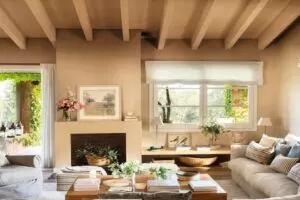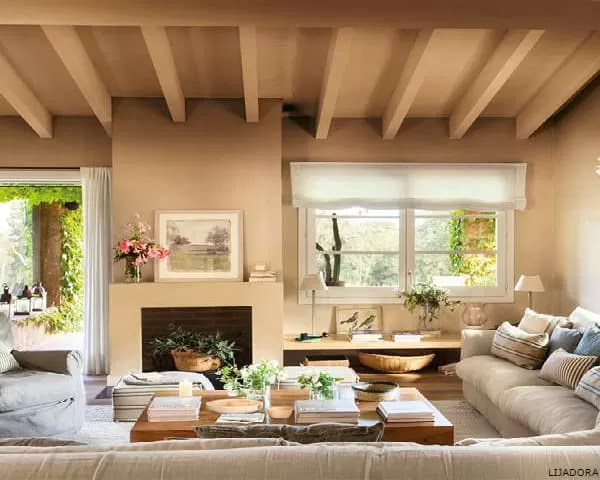Meaning of the Sand Color
The color sand or also known as beach color is characterized for being a very light shade of yellow, characteristic of the material that receives its name, which consists of a solid granular material composed of particles of rocks and minerals. It is usually camouflaged with light skin tones, projecting a sensation of sensuality and femininity.
This color is usually related to the cozy, luminous, versatile, sober and elegant, creating a balance between light and warmth, creating a refreshing and very natural environment, so it is usually related to the outdoors and a close link with nature.
It is composed of 76.1% red, 69.8% green and 50.2% blue. While in a CMYK color space, it is composed of 0% cyan, 8.2% magenta, 34% yellow and 23.9% black. It has a hue angle of 45.5 degrees, a saturation of 35.1% and a lightness of 63.1%.
Psychology of the Color Sand
As the color sand has a tendency to passivity, elegance and neutrality, it creates fresh, elegant and cozy environments, making you feel a sense of tranquility and peace in any space where it is used. As this color is associated with the ocean, it provides a state of tranquility and relaxation, proving to be an ideal color to combat stress, anger, and mental and physical exhaustion. It also helps to clear the mind.
The rooms in which this color predominates invite to rest and sleep conciliation. It is ideal in winter, because it creates a cozy atmosphere, and in summer, because it gives a fresh and warm touch. In either case it allows the individual a state of total calm.
Use of Sand Color in Interior Design and Decoration
The color sand is recognized for its great versatility when someone decides to use its shades on the wall. Thanks to its neutrality, it is perfect to combine with different styles without the need to overshadow the rest of the objects arranged in the room.
The potential of this color lies mainly in the bedroom, since it is the place of rest and relaxation. When combined with pastel tones, it creates the sensation of being on the shore of a beach or the sea. Painting in sand color forms a close bond with nature, favoring rustic styles with romantic touches. However, it is also appropriate in decorations with urban and contemporary finishes that seek a relaxed atmosphere.
This shade is indicated for those who wish to illuminate their spaces avoiding the purity of white and the neutrality of gray, balancing modernity and tradition while maintaining a harmonious center between the pastels and ochers of the other decorative elements. Finally, among its virtues is the maximization of spaces, a characteristic it shares with other light tones such as white, ochers and pastels.
Sand Color in the Kitchen
In this particular area this type of tones are not often used. However, the use of sand colors results in a perfect blend between the color and the other items that make up this space. With the use of this type of colors, a traditional, cozy and romantic atmosphere is created. More vivid and flashy colors are commonly used in kitchens, but if you are looking for simplicity and minimalism, the sand color is the perfect choice.
Sand Color in Hallways
Generally, hallways are one of the most neglected and forgotten places in homes, because they are usually not sufficiently decorated, and the reality is that they are one of the areas with the greatest potential. The color sand can reverse the boring effect of these places in warm areas and expression of the soul as in the rest of the home. When combined with eclectic objects such as shelves and mirrors these spaces are transformed into places of relaxation.
Sand Color in Bathrooms
The sand color on the walls together with white bathroom fixtures are the ideal allies to transform this area of the home into a relaxing environment that projects well-being. The warmth of this color is tinged by the white and forms a place of relaxation and care. The use of wooden or natural related accessories are the perfect complement for these places.
Sand for Exterior Walls
Although this color is related as a pale, yellowish or sandy color, the truth is that it is found in a wide range of varieties, as they can be clear, bright, intense or saturated. It is often confused with beige or gray.
The truth is that this variety allows more intense shades to be used for the exterior and fit perfectly. Being a sunny color with golden touches, it transmits energy and beauty to the facades. It can also be mixed with colors such as white or blue.
Sand Color Combined with White
The sand color and white are the perfect allies for exterior walls, but it is necessary to emphasize that in order to have a harmonious balance, the sand color should be used for the wall and the white to highlight and accentuate the details, transmitting naturalness and elegance.
It should be taken into account that when painting the exterior walls, a resistant and durable paint should be used and before doing so, the surface should be prepared to achieve a better adhesion. In the case of the details it is recommended to use brushes and for the case of extensive areas rollers.
Sand Color Combined with Blue
This yellowish-sandy color and blue form an attractive and harmonious contrast on exterior walls. If you want to implement it in interiors it is recommended to have a good lighting to avoid opacity in that area and for best results it is recommended the use of large windows. To obtain the desired cream color tone, it is enough to mix yellow with white, and even if you want to obtain other variations of this color, you can add blue, red or black, as the case may be.
Types or Varieties of the Color Sand
The color sand has a great variety of shades, balancing itself in a right point between ochers and grays, being neutral enough to be combined with other ranges of colors with more striking tones such as green, blue and red.
Desert Sand
It is a light yellow color with a slight reddish tone weakly saturated that corresponds to the coloration of deserts such as the dunes of Namibia.
Yellowish Sand
It is represented by a light yellowish shade with little saturation. A clear example of this tonality is the sand dunes of Coro in Venezuela.
Brown Sand
It is a light brown tonality characteristic in some parts of the world.
Grayish Sand
It is a sandy tonality very similar to light gray with a weak saturation.
Sand Color Number or Code
- Hexadecimal code: #ECE2C6
- RGB code: (236, 226, 198)
Sand Color Objects and Things
Sand, a lamp, floors, a wall, a piece of furniture, a rug, a chair, a dress, a pillow, a carpet, a towel, a gate, a necklace, a skirt, a door, a frame, a book, a canvas, a pair of pants, a sheet, wool, a window, a portrait, etc.
Other Colors in ALPHAPEDIA
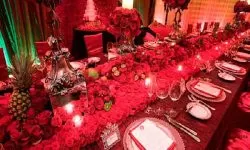
WINE COLOR: Meaning, Psychology and Properties
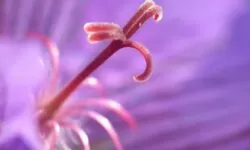
PURPLE COLOR: Meaning, Psychology and Types

BLACK COLOR: Types, Psychology and Meaning
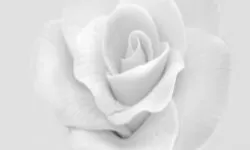
💚 WHITE COLOR: Types, Psychology and Meaning

INDIGO COLOR: Meaning and Psychology. Varieties and Types

AMBER COLOR: Types, Psychology and Meaning
Other Topics of Interest in ALPHAPEDIA

FREE MASTER DEGREE IN AGRIBUSINESS

FREE DOCTORATE IN RADIOLOGY

WHAT IS A PHD ?

FREE DOG TRAINING COURSE

FREE MASTER DEGREE IN CRIMINAL JUSTICE

INTERNATIONAL BUSINESS DEGREE
Images and Drawings with the Color Sand
